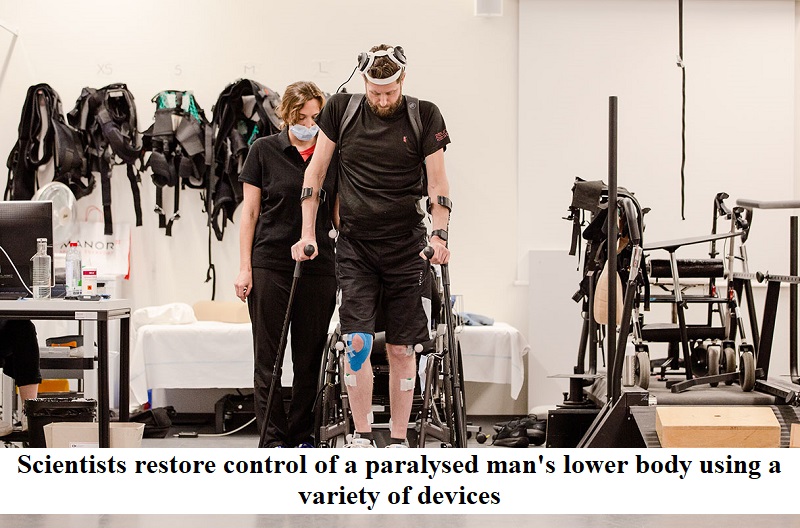
In 2011, Gert-Jan Oskam, who was residing in China at the time, experienced paralysis from the hips down due to a bicycle accident. However, scientists have made significant progress in restoring control of his lower body using a combination of innovative devices.
During a press briefing on Tuesday, Oskam expressed his excitement, stating, “For 12 years I’ve been trying to get back my feet. Now I have learned how to walk normal, natural,” as reported by the New York Times.
Researchers from Switzerland presented their findings in a report published on Wednesday in the journal Nature. They demonstrated the use of implants that created a “digital bridge” between Oskam’s brain and spinal cord, bypassing the injured areas.
Thanks to this groundbreaking discovery, Oskam, who is 40 years old, was able to stand, walk, and even navigate a steep slope using a walker. Remarkably, he has maintained these abilities for over a year after the implantation, and there are indications of neurological healing as he continues to walk with crutches even when the device is turned off.
Grégoire Courtine, a spinal cord specialist at the Swiss Federal Institute of Technology, Lausanne, and one of the leading researchers involved, explained, “We’ve captured the thoughts of Gert-Jan and translated these thoughts into a stimulation of the spinal cord to re-establish voluntary movement.” He expressed his amazement at seeing what was once considered science fiction becoming a reality.
Jocelyne Bloch, a neuroscientist at the University of Lausanne who performed the implantation, also shared her astonishment, stating, “It was quite science fiction in the beginning for me, but it became true today.”
Oskam had previously undergone stimulation surgeries, which had allowed him to regain some walking ability. However, his progress had reached a plateau. He expressed that these earlier technologies made his mobility feel unnatural and created a disconnect between his mind and body.
In this latest study, the researchers developed a brain-spine interface, using an artificial intelligence thinking decoder to interpret Oskam’s intentions, which were represented as electrical impulses in his brain, and translate them into muscular movements. The process retained the natural progression from thought to purpose to action.
Initially, electrodes were implanted in Oskam’s skull and spine to achieve these results. The scientists utilized a machine-learning program to identify the specific brain regions that were activated when Oskam attempted to move different parts of his body. This thinking decoder successfully correlated the activity of specific electrodes with specific movements.
Another algorithm was then employed to connect the brain implant to the spinal implant, which was programmed to transmit electrical signals to various areas of Oskam’s body, enabling movement. The program accounted for minor variations in the direction and speed of each muscle contraction and relaxation, ensuring a more natural experience.

Post Your Comments